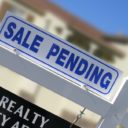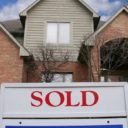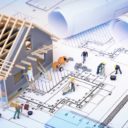
The National Association of Realtors said Monday existing home sales in the U.S. jumped 5.1 percent to their highest level since November 2009. The 5-1/2-year high hit in the month of May pushed resales to an annual rate of 5.35 million units, which was celebrated by FOX Business as the “latest indication that housing and overall economic activity were gathering steam in the second quarter.”
“Solid sales gains were seen throughout the country in May as more homeowners listed their home for sale and therefore provided greater choices for buyers,” Lawrence Yun, NAR chief economist said. “However, overall supply still remains tight, homes are selling fast and price growth in many markets continues to teeter at or near double-digit appreciation. Without solid gains in new home construction, prices will likely stay elevated — even with higher mortgage rates above 4 percent.”
But data from AEI’s International Center on Housing Risk suggest the tight supply cited in the existing home sales report is a symptom of a larger problem, not the cause. Government agencies are once again loosening lending practices and shifting the larger share of the mortgage lending market from large-bank lenders to non-lenders, which accounts for the lack of new construction in the market.
“One hears all the time that first-time buyers have limited access to mortgage debt. But this isn’t true,” said Stephen Oliner, co-director of AEI’s International Center on Housing Risk and senior fellow at UCLA’s Ziman Center for Real Estate. “Many first-time buyers with low FICO scores and little money down are buying homes every month.”
The National Mortgage Risk Index (NMRI) for Agency purchase loans came in at a series high 12.08 percent in April, as the market share of high-risk loans outnumbered the share of low-risk loans for the first time since tracking began.
The NMRI gained 0.2 percent from the average for the prior three months and 0.7 percent on a year-over-year basis, and is widely expected to continue the trend when the new survey is released this week. The share of high-risk Federal Housing Administration (FHA) loans and the subindex for VA loans also reached series highs.
(The May NMRI is Out, and It’s Not Good)
“With leverage unconstrained by the Qualified Mortgage regulation, increasing competition between Fannie and FHA, and eventually Freddie, will slowly introduce destabilizing risk nationally,” said Edward Pinto, the former chief credit officer for Fannie Mae and co-director of AEI’s International Center on Housing Risk. “The goal of the NMRI is to quantify and pinpoint these leverage trends in real time.”
In fact, the NAR, which is rightfully referred to at AEI as the housing lobby, isn’t disputing much of the survey’s findings.
“The return of first-time buyers in May is an encouraging sign and is the result of multiple factors, including strong job gains among young adults, less expensive mortgage insurance and lenders offering low downpayment programs,” said Yun. “More first-time buyers are expected to enter the market in coming months, but the overall share climbing higher will depend on how fast rates and prices rise.”
According to Freddie Mac, the average commitment rate for a 30-year, conventional, fixed-rate mortgage climbed in May to 3.84 percent from 3.67 percent in April but remained below 4.00 percent for the sixth straight month.
The Realtors group revised April’s sales pace up to 5.09 million units from the previously reported 5.04 million units. Economists polled by Reuters had forecast home resales rising to a 5.26 million-unit pace last month.
First-time buyers accounted for 32 percent of transactions, the largest share since September 2012 and consistent with the concerns raised by the data in the NMRI. Despite Yun’s claim, unemployment among young adults is still far higher than the national average (a disputed number), and has largely remained unchanged over the past 12 months.
Existing Home Sales by Regional
(Source: NAR)
May existing-home sales in the Northeast jumped 11.3 percent to an annual rate of 690,000, and are now 11.3 percent above a year ago. The median price in the Northeast was $269,000, which is 4.8 percent higher than May 2014.
In the Midwest, existing-home sales rose 4.1 percent to an annual rate of 1.27 million in May, and are 12.4 percent above May 2014. The median price in the Midwest was $181,900, up 9.4 percent from a year ago.
Existing-home sales in the South increased 4.3 percent to an annual rate of 2.18 million in May, and are 6.9 percent above May 2014. The median price in the South was $198,300, up 8.2 percent from a year ago.
Existing-home sales in the West climbed 4.3 percent to an annual rate of 1.21 million in May, and are 9.0 percent above a year ago. The median price in the West was $324,000, which is 10.2 percent above May 2014.







BillyRay999 / June 23, 2015
NAR – one of the biggest groups of misleading liars out there. take NOTHING they say at face value.
/
Douglas Bean / June 24, 2015
Sounds like the fuse is lit on the next housing crisis with HELOC’s getting ready to turn into pumpkins, ARM loans getting ready to surprise borrowers, and another push for low down payment first-time buyers with low credit scores. History does repeat.
/